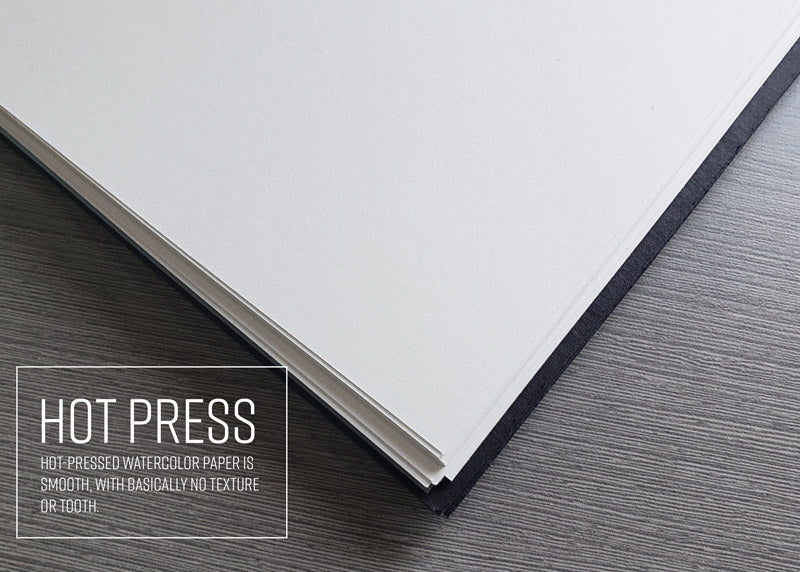Watercolor is a fickle medium and any watercolorist will tell you just that. But what you may not know is one of the most important things that will make or break your watercolor experience is the watercolor paper you use. Learn about the different features of watercolor paper so you can make the paper decision that’s best for you!
Types of watercolor paper
The first thing to know is there are several kinds of watercolor paper, but two main ones: hot-pressed and cold-pressed.
Hot-pressed: Hot-pressed paper is smooth, with basically no texture or tooth. One of the biggest featured of hot pressed paper is it doesn’t soak up water quickly, meaning you can move your paint around the page more.
Cold-pressed: Cold-pressed paper is bumpy and has a great deal of tooth. This adds texture to your paint and creates the classic watercolor look. Cold-pressed is by and large the most common and popular watercolor paper.
At Bee Paper, our watercolor papers are all cold-pressed to meet the biggest need of the Bee Hive. But even within cold-pressed paper there are some differences to be aware of!
What’s in watercolor paper?
One of our best sellers is our 100% cotton cold-pressed paper. There are a lot of benefits to 100% cotton paper. First, it’s much stronger. Obviously, watercolor painting requires a lot of water, which can be tough on paper. This means the stronger the paper, the more water you can apply. 100% cotton watercolor paper is also more absorbent than wood pulp, which again means it can take a great deal of water. For using wet on wet techniques, you need a great deal of water to get the job done and cotton watercolor paper helps! Finally, cotton watercolor paper is naturally acid free and doesn’t need to be treated to withstand the test of time.
The biggest benefit of paper that isn’t 100% cotton is the price. 100% cotton paper is expensive to make and process, which means the price of paper is higher. Using paper with a mix of wood pulp and cotton is a great way to work on your watercolor skills more affordably!
Size and shape options
The final piece to the watercolor paper puzzle is the shape of your paper. Shape may sound strange when talking about paper, but there are actually plenty of options. Whether you want a roll, a journal, or sheets! The choice is yours, but we’ll break it down for you.
Sheets and rolls:
Watercolor sheets are a popular choice but require a little bit of additional love. The watercolor paper needs to be stretched. To stretch watercolor sheets, evenly soak the entire sheet, then tape it down to the painting surface by taping each of the four sides. This surface can be whatever you want it to be! A clipboard, a table, anything flat! It’s important there are no air bubbles underneath the paper. Once the paper is dried, you are free to paint!
For a more in depth look at watercolor paper stretching, check out this video by Blick Art Materials: https://www.youtube.com/watch?v=9c6OWKyYNKI
Similar to sheets in that it needs to be stretched are watercolor paper rolls. Watercolor rolls contain a LOT of paper and a lot of versatility too! With a watercolor paper roll, you can cut the paper to the size of you choosing and make it perfect for your next project.
Journal:
If paper stretching isn’t your jam but you still want to watercolor, we offer the Bee Creative Watercolor Journal! The spiral bound journal allows your work to lay flat, which is so important for watercolor work. Take a look at @arobinsonart who uses the watercolor journal to make her favorite pieces possible!
This was a quick and very simple guide, because there are so many factors that go into watercolor paper. The MOST important factor though is preference. There is no standard of *best watercolor paper* because everyone wants something different from their art. Whatever you want to make, we hope Bee Paper can help you find the paper that’s right for you!



